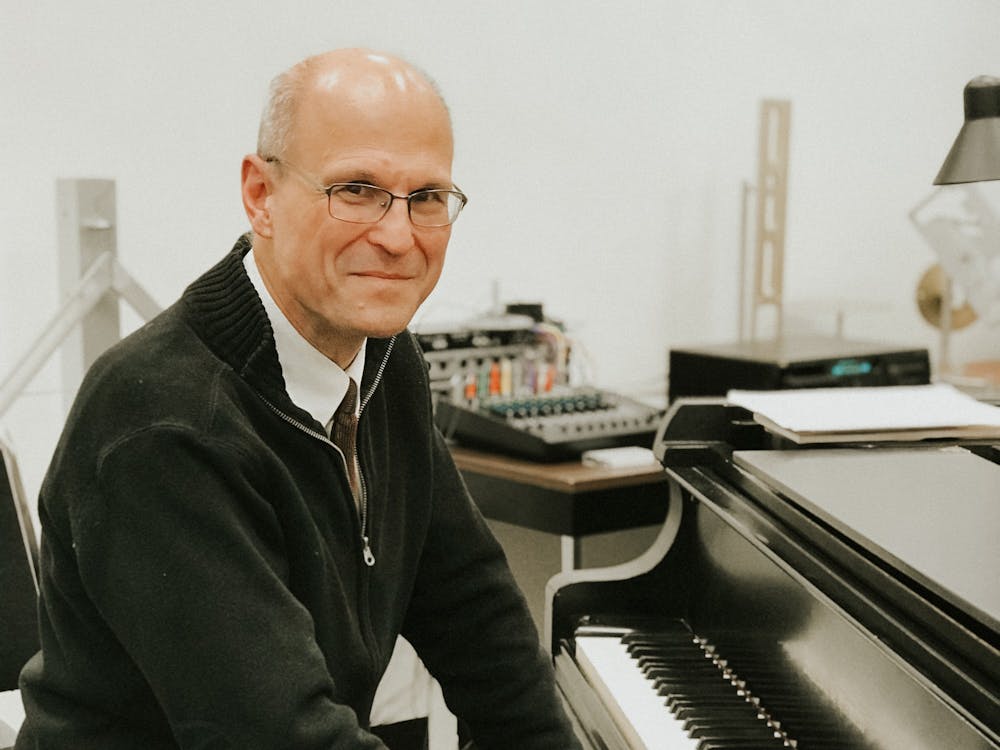Dr. Scott Lindroth will remain a composer, but for his role as vice provost for the arts, this year is a swan song. Lindroth, who took on the position in 2007, will retire next May to return full-time to teaching and composing.
In Lindroth’s 13-year tenure, the arts at Duke have grown exponentially. Lindroth first arrived at Duke in 1990 as a professor in the music composition program. Upon arrival, he encountered an up-and-coming Duke with under-resourced but close-knit arts departments, stashed away in East Campus buildings Bivins and Biddle — which were, at the time, inadequately equipped to accommodate artists.
“Because we were all in the same boat, there was a sense of collaboration across the arts … to band together,” Lindroth said. “I think it built a nice infrastructure, despite the marginalization.”
However, as Duke’s status as a prominent academic institution was on the rise, the role that the arts could play in distinguishing the university entered the conversation. Around the turn of the millennium, then-president Nannerl Keohane pushed for the opening of the Nasher Museum, insisting, according to Lindroth, that in order for Duke to be a great university, it needed a great arts institution.
Lindroth remembers that Keohane’s push for the Nasher initially met resistance, but the museum found immediate success upon opening in October 2005. This led to the Arts Initiative, a strategic plan for positioning the arts institutionally — including the addition of a vice provost for the arts.
“All these things were geared to try to find a larger campus culture for the arts. It’s slow-going, you know — there’s so much going on at Duke,” Lindroth said. “To get something to rise above that basic noise threshold on campus is a challenge, but at least we were part of that noise now.”
In the new role, Lindroth focused on making space for the arts — literally and figuratively. Student-led initiatives supported by Lindroth created the Student Arts Annex, DuArts, the Duke Arts Festival and DEMAN. From 2011 to 2013, Lindroth played an instrumental role in the renovation of the Baldwin Auditorium, which had last been renovated in the 1960s. Alongside Aaron Greenwald, former director of Duke Performances, Lindroth developed a multi-visit model for visiting artists to develop sustained relationships with Duke, such as a three-year collaboration with the American Ballet Theatre.
“What surprised me was that we were able to get artist residencies in public policy, in chemistry, in neuroscience,” Lindroth said. “To see that there was interest in artist residencies all across campus … that helps begin to shape an argument for why a research university that isn’t an arts school should invest in the arts.”
The rising impact of the Arts Initiative culminated in an opportunity to build the Rubenstein Arts Center, which opened in 2018.
“The spirit of the entire building is … [a space] where students from all areas of the university can come develop arts projects, make them, but also share them,” Lindroth said. “We create this flow of projects that we can dream up in our respective places on campus, but then we go to the Ruby to pull them together.”
The existence of an all-encompassing arts space fostered genuine collaboration across arts departments, according to Lindroth’s student Brooks Frederickson, a Ph.D candidate in music composition.
“It’s a space that isn’t owned by a particular department; people from all departments can feel comfortable,” Frederickson said. “Working to make this space for departments to interact is a huge thing that [Lindroth] has done, and that’ll outlive his tenure.”
The search for Lindroth’s successor began Nov. 15. The search committee is chaired by Tom Rankin, professor of the practice of art and documentary studies and current director of the MFA in Experimental and Documentary Arts.
“Being able to bridge [arts] spaces on campus helped create a moment — it set the table for the next phase,” Rankin said. “The next vice provost for the arts has a really wonderful place to start based on what Scott’s done in the past 13 years.”
According to Rankin, the search committee is seeking an “advocate and champion” for the arts at Duke, in Durham and in the world, with a broad perspective beyond their own artistic practice.
“It needs to be somebody who has big aspirations, because you’re not going to get very far thinking the status quo is good enough,” Rankin said.
Lindroth’s successor will be responsible for developing a new strategic direction for the arts, in light of the impact made under Lindroth’s leadership.
“It feels presumptuous to say that we have a vibrant arts community at Duke — I actually believe that, but there’s still a long way to go,” Lindroth said. “But that more and more people that I meet at Blue Devil Days are thinking about [the arts] is gratifying. That’s more of a long, slow burn that will continue to play out, I hope.”
Get The Chronicle straight to your inbox
Signup for our weekly newsletter. Cancel at any time.

